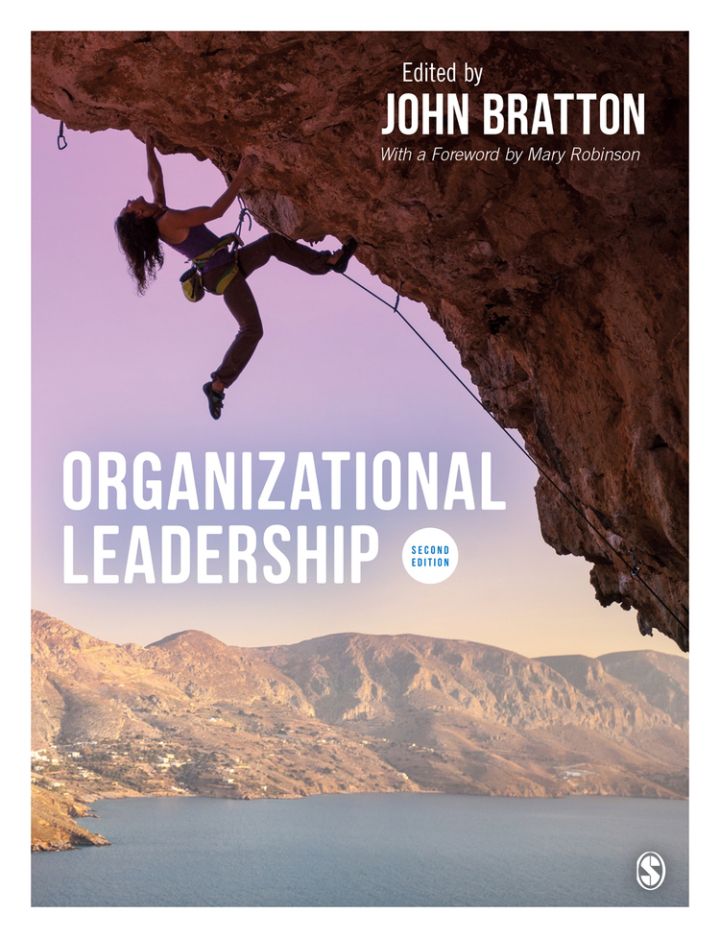
Organizational Leadership 2nd Edition
PUBLISHER: Sage
Trường ĐH, Nhóm, Thư Viện: Gọi 0915920514 để báo giá eBook hosting trên Vital Source hoặc mua Sách In
Lãnh đạo tổ chứcHiểu thực tế về lãnh đạo tổ chức đương đại với ấn bản thứ hai của cuốn sách giáo khoa kích thích tư duy này. Thông qua phân tích các lý thuyết chính và các vấn đề thời sự như đổi mới, giới tính, quyền lực, đạo đức và tính bền vững của môi trường, các tác giả đã khéo léo minh họa cách lãnh đạo không thể tách rời khỏi bối cảnh tổ chức rộng lớn hơn và tại sao lãnh đạo ngày càng được coi là nỗ lực chung giữa người lãnh đạo và người phục tùng. . Cuốn sách đã được cập nhật đầy đủ, với phần giới thiệu mới thảo luận về những thách thức mà các nhà lãnh đạo phải đối mặt trong đại dịch Covid-19 cũng như Lời nói đầu của Mary Robinson. MỚI cho ấn bản này: Một chương mới về Lãnh đạo nhóm xem xét động lực của nhóm, vai trò của công nghệ trong làm việc nhóm và những thách thức nảy sinh đối với các nhóm ảo Một chương mới về Lãnh đạo và Trí tuệ nhân tạo đề cập đến sự phát triển của AI và dữ liệu lớn cũng như cách AI ảnh hưởng đến mối quan hệ việc làm và mối quan hệ lãnh đạo-người thừa hành Tính năng Tiêu điểm đạo đức mới trong tất cả các chương khám phá các vấn đề đạo đức mà các nhà lãnh đạo phải đối mặt và khuyến khích sự phản ánh. Thích hợp cho sinh viên đại học và sau đại học đang theo học về lãnh đạo. John Bratton là Giáo sư danh dự tại Trường Quản lý tại Đại học Queen′s Belfast, Bắc Ireland.
Your Guide to Using this BookAbout the ContributorsAcknowledgementsList of Case StudiesForeword by Mary RobinsonPrologue: Leadership in the Shadow of the PandemicThe origins and spread of the pandemicFailures of leadershipObjectives of this bookA framework for studying leadershipThe organization of this bookFurther readingPART I CONTEXTUALIZING LEADERSHIP1 The Nature of LeadershipChapter outlineLearning outcomesIntroductionDefining leadershipLeadership and managementMapping the changing study of leadershipCritical leadership studiesThe employment relationshipConclusionChapter review questionsFurther reading2 Power and LeadershipChapter outlineLearning outcomesIntroductionConceptualizing powerDifferent perspectives on powerPower and managementConclusionChapter review questionsFurther reading3 Culture and LeadershipChapter outlineLearning outcomesIntroductionThe nature of national culturesUnderstanding organizational cultureDimensions of organizational culturePerspectives on organizational cultureOrganizational culture and leadershipEvaluation and criticismConclusionChapter review questionsFurther reading4 Strategic Management, Innovation, and LeadershipChapter outlineLearning outcomesIntroductionStrategic managementShareholder value maximizing and strategyStrategy and stakeholdersThe nature of innovationThe external and internal contexts driving innovationLeaders’ roles in innovation processesConclusionChapter review questionsFurther readingPART II LEADERSHIP THEORIES5 Trait, Behaviour, and Contingency Theories of LeadershipChapter outlineLearning outcomesIntroductionLeader traits and attributesLeader behaviour and stylesContingency theories of leadershipConclusionChapter review questionsFurther reading6 Charismatic and Transformational LeadershipChapter outlineLearning outcomesIntroductionThe nature of charismatic leadershipNeo-theories of charismatic leadershipTransformational leadershipCritiquing charismatic and transformational leadershipConclusionChapter review questionsFurther reading7 Relational and Distributed Theories of LeadershipChapter outlineLearning outcomesIntroductionClassical relational studiesContemporary theories of relational leadershipPositivist dyadic relational perspectivesSocial constructionist group-level relational perspectivesPractising relational leadershipThe growth of distributed leadershipPractising distributed or shared leadershipEvaluation and criticismConclusionChapter review questionsFurther reading8 FollowershipChapter outlineLearning outcomesIntroductionThe nature of followershipTheorizing followershipFollowership typologiesFollower personality and self-identityFollower perception and motivationEvaluation and criticismConclusionChapter review questionsFurther readingPART III MANAGING PEOPLE AND LEADERSHIP9 Ethics and LeadershipChapter outlineLearning outcomesIntroductionThe nature of ethical leadershipPhilosophical approaches to ethical leadershipDimensions of ethical leadershipOrganizations behaving badly: Failures in ethical leadershipContext, the rhetoric, and realityWhistleblowing: Is it responsible behaviour?ConclusionChapter review questionsFurther reading10 Human Resource Management and LeadershipChapter outlineLearning outcomesIntroductionThe nature of human resource managementScope and functions of human resource managementTheorizing human resource managementHuman resource management and leadershipCritiquing the human resource management discourseConclusionChapter review questionsFurther reading11 Leadership DevelopmentChapter outlineLearning outcomesIntroductionLeader and leadership development in organizationsReflection and critical thinking for leadership developmentWhat capabilities should leaders develop?Approaches to leaders’ developmentApproaches to developing collective leadership abilitiesConclusionChapter review questionsFurther reading12 Gender and Diversity in LeadershipChapter outlineLearning outcomesIntroductionThe nature of diversityThe glass ceiling, the labyrinth, and the glass cliffThe role of gender and diversity in crisis leadershipWomen in global leadershipFuture challenges for gender diversity and inclusion practicesSupporting women to leadConclusionChapter review questionsFurther readingPART IV CONTEMPORARY LEADERSHIP13 Team LeadershipChapter outlineLearning outcomesIntroductionThe nature of work teamsUnderstanding team dynamicsTechnology and teamworkTeams and leadership theoryCritical perspectives on teamsConclusionChapter review questionsFurther reading14 Artificial Intelligence and LeadershipChapter outlineLearning outcomesIntroductionThe nature of technologyCapitalism and waves of technologyThe rise of AI and big dataThe effects of AI on the employment relationshipLeadership in the age of artificial intelligenceCritical debates on artificial intelligenceConclusionChapter review questionsFurther reading15 Leading Pro-environmental ChangeChapter outlineLearning outcomesIntroductionThe nature of environmental sustainabilityEnvironmental leadership, organizational change, and cultureCreating a sustainable workplace through human resource practicesEmployee voice in environmental sustainabilityCritical perspectives on corporate-oriented sustainabilityConclusionChapter review questionsFurther reading16 Leadership in Public Sector OrganizationsChapter outlineLearning outcomesIntroductionFraming public sector leadershipDistinctive challenges associated with public sector leadershipThe new public management and the rise of transformational leadershipBeyond transformational leadership: Shared and distributed leadershipChallenges of distributed leadership in public sector organizationsLeadership and performance in public sector organizationsLessons for public sector leadership from the COVID-19 crisisConclusionChapter review questionsFurther reading17 Leading Post-industrial Urban and Regional RenewalChapter outlineLearning outcomesIntroductionThe nature of place-based leadership for urban and regional renewalRegional innovation systems and strategiesPlace-based leadershipPlace-based leaders, knowledge producers, and decision-makersGenerative leadership – a missing link in transformative effortsCriticism and exemplary research for place-based leadershipConclusionChapter review questionsFurther readingReferencesIndex















